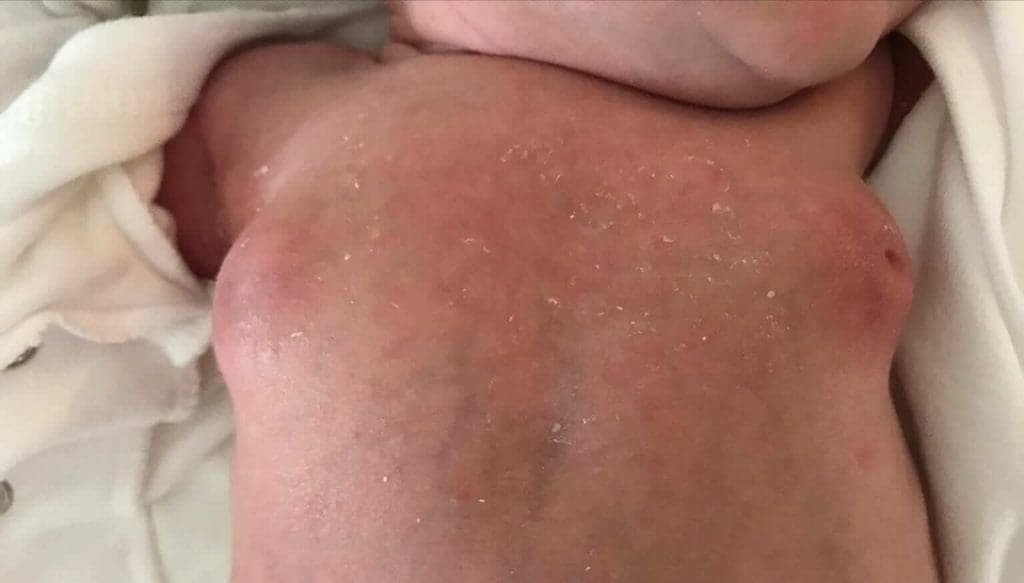
Breast tissue in the newborn baby – benign hypertrophy and mastitis
Two very important phenomena that happen in newborn babies, which you should be aware of. The first, enlargement (hypertrophy) of the breast tissue. The second – an infection of the breast tissue called mastitis.
Hypertrophy of the breast tissue in the newborn
Sometimes wrongly called Gynecomastia. The truth is that Gynecomastia is a term used to describe an enlargement of the breast tissue in boys only. While enlargement of the breast tissue in babies occurs both in females and males (same prevalence) – so this term is incorrect.
This is a very common phenomenon that can be found in around 70% of babies. The reason for this enlargement is a high estrogen levels passing to the baby while he was in the womb.
The breast area, unilateral or bilateral, can be a little swollen but mostly soft without any tenderness. In other cases (see in the photo) the condition is more prominent and the tissue is harder and tender (don’t be confused with mastitis – explanation is ahead).
Due to prolactin secretion in those babies, in about 5% of them you can identify milk discharge. Just an anecdote – in the folklore tales of some populations, this milk is called “witches milk” and the common belief was that the milk was used to feed witches and goblins.
Either way, you should not squeeze or try to release the milk out, since it can cause infections or prolong the duration in which the breast tissue is enlarged or producing milk.
Hypertrophy of the breast tissue in babies is a benign phenomenon, with no need in treatment. It will go away on its own by 2-4 weeks.
What is mastitis?
An infection of the breast tissue in the newborn, with or without breast tissue hypertrophy. It is mostly caused by bacteria living naturally on the skin, which penetrated the breast tissue. That is the reason why you should avoid squeezing and pressing the breast, so you will not cause any tears in this area.
We will identify this condition by an enlargement, mostly unilaterally, of one of the breast. This will be accompanied by redness and tenderness in the area. This infection does not have to be accompanied with fever. In a baby up to 2 months old, it is a reason to turn to a prompt medical evaluation and consideration of antibiotic treatment.
For comments and questions, please register
